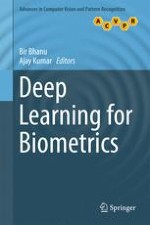
2017 | OriginalPaper | Buchkapitel
1. The Functional Neuroanatomy of Face Processing: Insights from Neuroimaging and Implications for Deep Learning
verfasst von : Kalanit Grill-Spector, Kendrick Kay, Kevin S. Weiner
Erschienen in: Deep Learning for Biometrics
Aktivieren Sie unsere intelligente Suche, um passende Fachinhalte oder Patente zu finden.
Wählen Sie Textabschnitte aus um mit Künstlicher Intelligenz passenden Patente zu finden. powered by
Markieren Sie Textabschnitte, um KI-gestützt weitere passende Inhalte zu finden. powered by